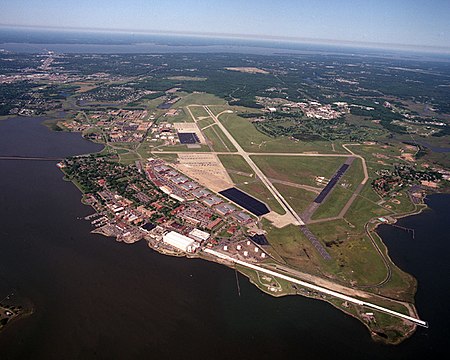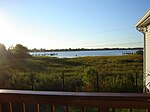Joint Base Langley–Eustis

Joint Base Langley–Eustis (IATA: LFI/FAF, ICAO: KLFI/KFAF, FAA LID: LFI/FAF) is a United States military facility located adjacent to Hampton and Newport News, Virginia. The base is an amalgamation of the United States Air Force's Langley Air Force Base and the United States Army's Fort Eustis which were merged on 1 October 2010. The base was established in accordance with congressional legislation implementing the recommendations of the 2005 Base Realignment and Closure Commission. The legislation ordered the consolidation of the two facilities which were nearby, but separate military installations, into a single Joint Base, one of 12 formed in the United States as a result of the law. Unlike other joint bases that share common perimeters, the two components are geographically separated by 17 miles. In January 2010, the Air Force reactivated the 633rd Air Base Wing to assume host unit and installation support functions at each location. The installation assumed its full operational capability (FOC) in October 2010. The 633rd ABW commander is Col Gregory Beaulieu, and Chief Master Sgt. Kennon D. Arnold is its command chief master sergeant. The 633rd ABW is responsible to Air Combat Command.
Excerpt from the Wikipedia article Joint Base Langley–Eustis (License: CC BY-SA 3.0, Authors, Images).Joint Base Langley–Eustis
Poulas Court, Hampton
Geographical coordinates (GPS) Address Nearby Places Show on map
Geographical coordinates (GPS)
| Latitude | Longitude |
|---|---|
| N 37.082777777778 ° | E -76.360555555556 ° |
Address
Langley Air Force Base (Joint Base Langley-Eustis)
Poulas Court
23669 Hampton
Virginia, United States
Open on Google Maps









